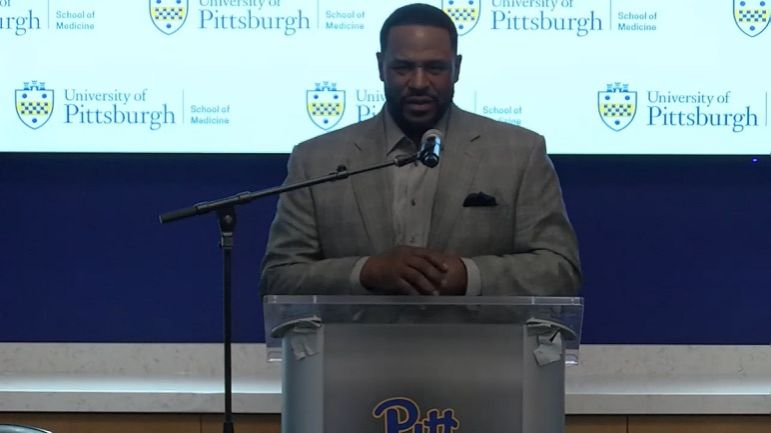Former Pittsburgh Steelers running backs Jerome Bettis and Merril Hoge will donate their brains to science after they die in an effort to help doctors better understand CTE and how it can be treated and prevented by modern medicine in the future.
Bettis and Hoge were two of several notable names at the grand opening of the National Brain Bank at the University of Pittsburgh Thursday, making the pledge to donate their brains to help future athletes.
Bettis and Hoge were two tough runners who spent years in the NFL. Bettis spent 13 years in the NFL, 10 of them with Pittsburgh, and is remembered as one of the most powerful backs in football history. He didn’t go around people, he went through people, and though it put him in the Hall of Fame, it also put his body at an increased risk.
“When the question was raised, would I be willing to donate, obviously you’re concerned, you don’t want to think about it,” Bettis said during the conference. “It’s a big decision. But it was an easy decision.”
Bettis said he had three reasons to make that pledge. He recognized the players who came before him, who sacrificed their bodies, and helped grow the game that Bettis got the chance to play and create wealth for himself and for his family.
“My donation will help the next generation and the next generation after that benefit from the findings,” Bettis said.
He went on to cite the social perspective donating his brain can help. Research into dementia and Alzheimer’s to help doctors more quickly gain answers and treatment. Finally, Bettis said he personally felt compelled to honor his family. His son plays high school football and his daughter suffered multiple concussions in basketball. Bettis said he wanted to be a “role model” to help protect his children’s future, giving doctors as much as possible learn about brain trauma and injuries playing sports.
Hoge spent eight seasons in the league, seven with Pittsburgh, and has an incredibly close connection to head injuries. His career was shortened by concussions. He once told the story about a head injury he sustained while playing in Chicago. Doctors cleared him to return, and he was hit again, leading him to nearly losing his life. An excerpt from this 2000 New York Times article that highlighted Hoge’s concussions.
“Five weeks later, he was hammered on a tackle in a game against Buffalo and collapsed on the next down. His vital signs vanished for a few seconds. He spent two days in an intensive-care unit and was told by neurologists that his eight-year career was over.
For a year, Hoge said, he could not stand bright lights and had dizzy spells. He struggled with arithmetic, and reading was difficult. He also had no sense of direction.”
Hoge estimates he suffered 12 concussions throughout his football career, severely increasing his risk for side effects and possibly CTE later in life.
Speaking at today’s conference, Hoge says the more people who can help, the better off athletes everywhere will be.
“The more we have on our team, the more answers we’re gonna have and the better the team is going to be,” he said. “And this can be the best brain bank in the world if done right. And the integrity and the principles are here.”
CTE is a disease that has ailed many athletes over the years, including a handful in Pittsburgh. One of the most notable cases is former Steelers great Mike Webster. One of the first players to ever receive such a diagnosis after his death, his friends and family saw the Pro Football Hall of Fame center’s life deteriorate in his final years. It’s a disease that causes the brain to decay over time and can only be diagnosed in players after they die.
Doctors still have much to learn about brain injuries related to sports and concussions. But there’s an openness about the topic that didn’t exist 20 years ago. Hoge and Bettis are doing all they can to make the next generation that much safer.








